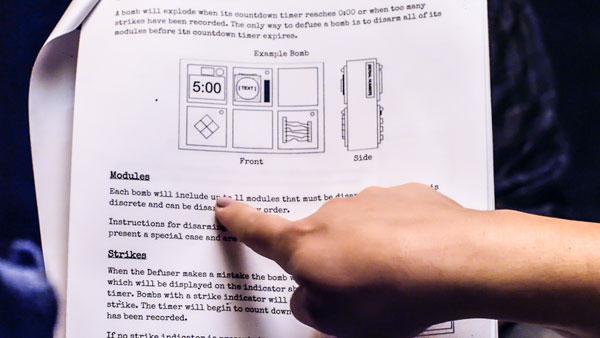
- #KEEP CALM AND NOBODY EXPLODES RESIZING WINDOW CODE#
- #KEEP CALM AND NOBODY EXPLODES RESIZING WINDOW PLUS#
- #KEEP CALM AND NOBODY EXPLODES RESIZING WINDOW WINDOWS#
I cannot imagine that this is a particularly rare use case in these days of expensive power in Europe, given that desktops are often more power-hungry than headless servers. I'm running it remotely because the remote system (actually 'on the other side of my desk' on the other end of an unshared GbE connection, so not that remote) is faster than the local one, has ECCRAM where the local desktop (like most desktops) has normal RAM, has far *more* RAM which Emacs always likes, has the house RAID array local rather than over NFS, and is the machine that I don't shut down every night.
#KEEP CALM AND NOBODY EXPLODES RESIZING WINDOW WINDOWS#
If compositing is making X creak at the seams this much, maybe a rethink is necessary, but personally given the choice between network transparency and wobbly windows I'd jump at network transparency every time.ĭo you mean "why am I running it remotely"? I'm running it on X to get lots of fonts and colours and keystrokes (I use shift, control, meta, super and hyper in different combinations and regularly wish there were more bucky bits!) I don't know what the hell the Wayland people are doing with X to make it tear all the time, maybe it's compositing. Total amount of flashing or tearing I have had in X since I got a graphics card newer than an S3: none, not even when doing simultaneous overlapping textured video playback and oolite. I don't understand why this is such an issue. If they reimplement it at all, which I doubt.) Doubtless they will all use totally different authentication mechanisms and have their own network-related security holes.

(From other comments on LWN, I understand that VNC is not quite so bad anymore, and that this should be fixed 'properly' by having every single toolkit independently reimplement network transparency, only not a single toolkit has actually done that to my knowledge. "A higher-performance version of VNC", the protocol in which scrolling a nearly-completely-black screen with a bit of text on it over a 1Gbps network takes half a second or so and is juddery as hell.
#KEEP CALM AND NOBODY EXPLODES RESIZING WINDOW PLUS#
My Emacs disagrees, it's running on a headless server using network transparency, plus client-side fonts, right now and working quite happily with very low volumes of network traffic and effectively instantaneous screen updates. (I have a good few (non-free) games that insist on rendering on only one monitor, which is reasonable, but every one of them without exception can be forced to render on a specific one and turn the other one off.) How this is better than X, where nothing but SDL (sigh, fixed in SDL 2) needed hacking for multiple monitors on my system, is not at all clear.



#KEEP CALM AND NOBODY EXPLODES RESIZING WINDOW CODE#
That's code for "a random half of your applications will eventually support your second monitor: the other half won't", and is just as broken as client window decorations for exactly the same reason. I'm afraid the whole thing strikes me as so one-sided it borders on disingenuous :( I'd like to like Wayland, but it still gets my hackles up every time I think about it.Įric's argument for why not to call it X12 is bizarre - because if it were called X12 people who care about X might care about it, as if they won't care if it's called something else! A better reason for its not being called X12 is that it is clearly not an evolution of X11 in the way X11 was an evolution of X10: it's not a network protocol at all.


 0 kommentar(er)
0 kommentar(er)
